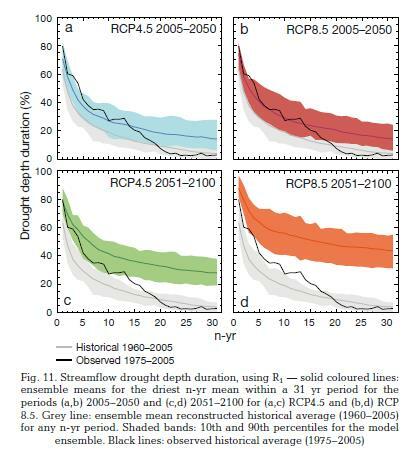Future Impacts of Climate Change on Streamflows

Authors: Sonya Fiddes and Bertrand Timbal
Abstract: Streamflows in key catchments across the State of Victoria, Australia, are projected into the future utilising a previously developed multiple linear regression. The regression uses a temporal range of rainfall and temperature parameters to compute monthly streamflows, and is applied to an ensemble of 22 statistically downscaled global climate models. This method reproduced historical streamflows well: on average the reconstruction overestimated the observed mean by 1% and underestimated the observed variance by 2%, although this varied on a catchment-to-catchment basis. Despite the accurate reconstruction of the mean streamflow, no events of similar magnitude to the most severe drought on record (the Millennium drought, 1997−2009) were found in the historical reconstruction for the current climate. Furthermore the reconstructed streamflow did not exhibit declining trends similar to what has been observed, due to the absence of declining rainfall in the climate model simulations for the historical record. Future projections under a high emissions pathway indicate a large reduction (24−87%) in streamflow by the end of the century, with conditions similar to the Millennium drought becoming the norm. The driest 10 yr mean streamflow was found to be 78% worse than the Millennium drought under a high emissions pathway. The greatest reductions in streamflow are seen through the May−November period. This is an important step in understanding how Victoria’s water security will be affected by climate change.
Citation:Fiddes, S. and B. Timbal. 2017. Future impacts of climate change on streamflows across Victoria, Australia: making use of statistical downscaling. Climate Research. 71:219–236.
The article is available here.